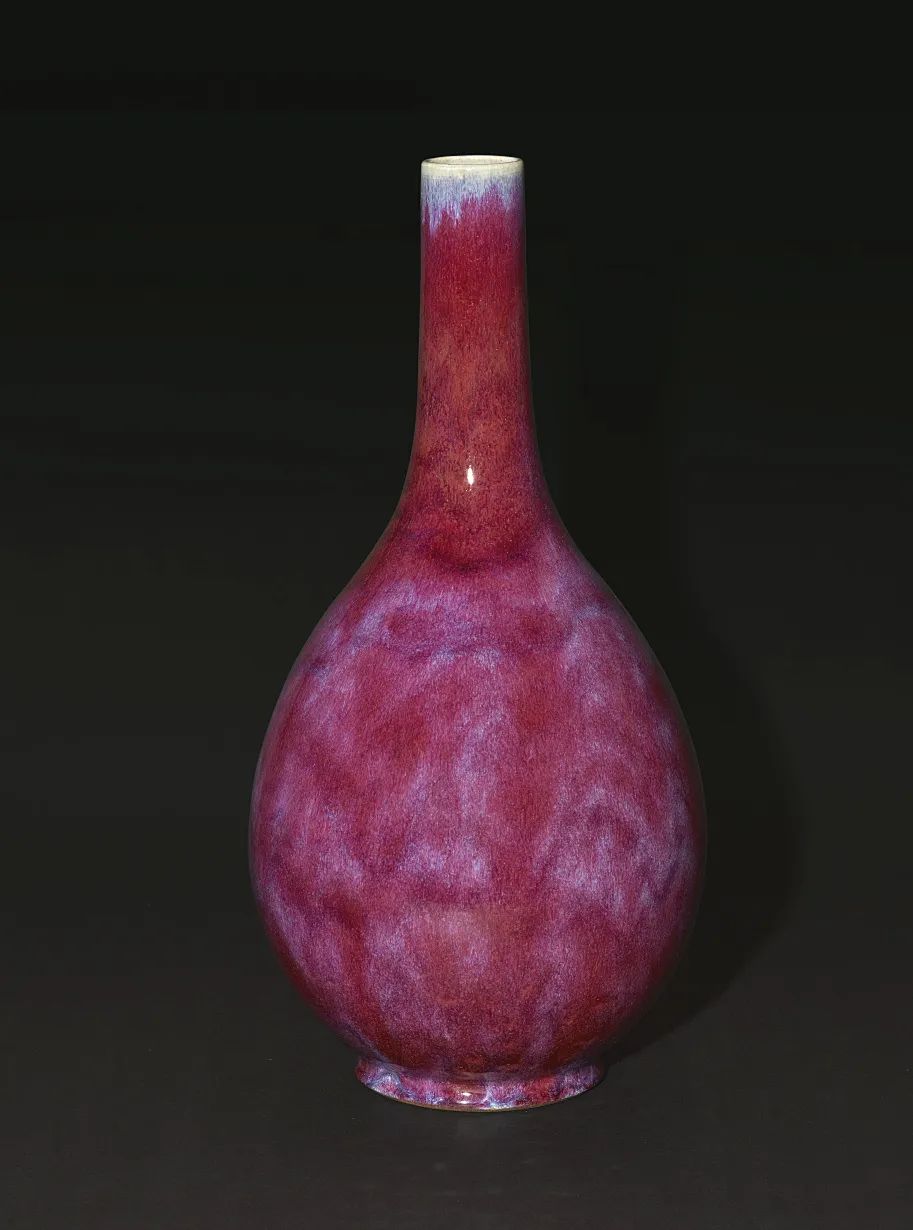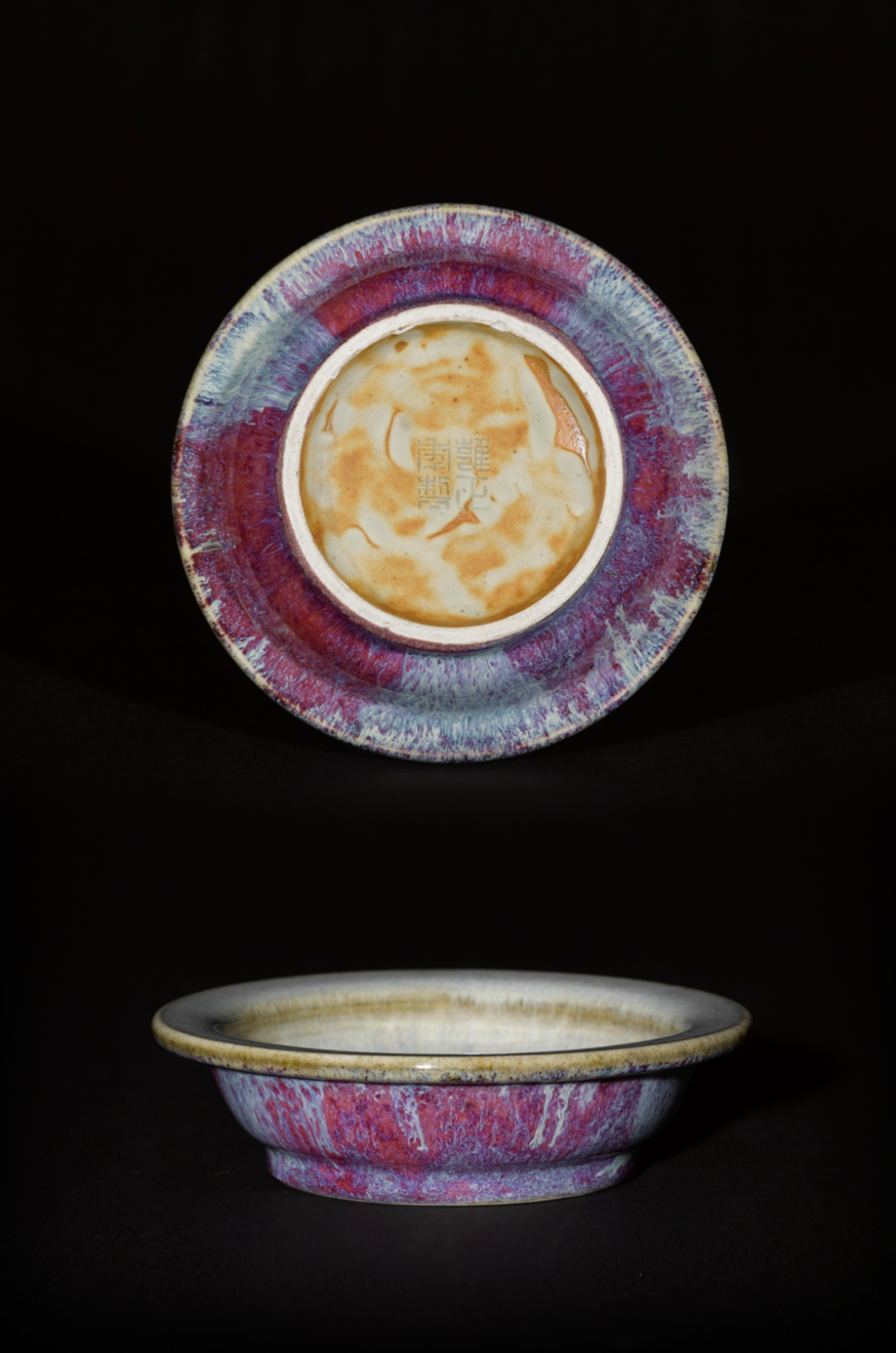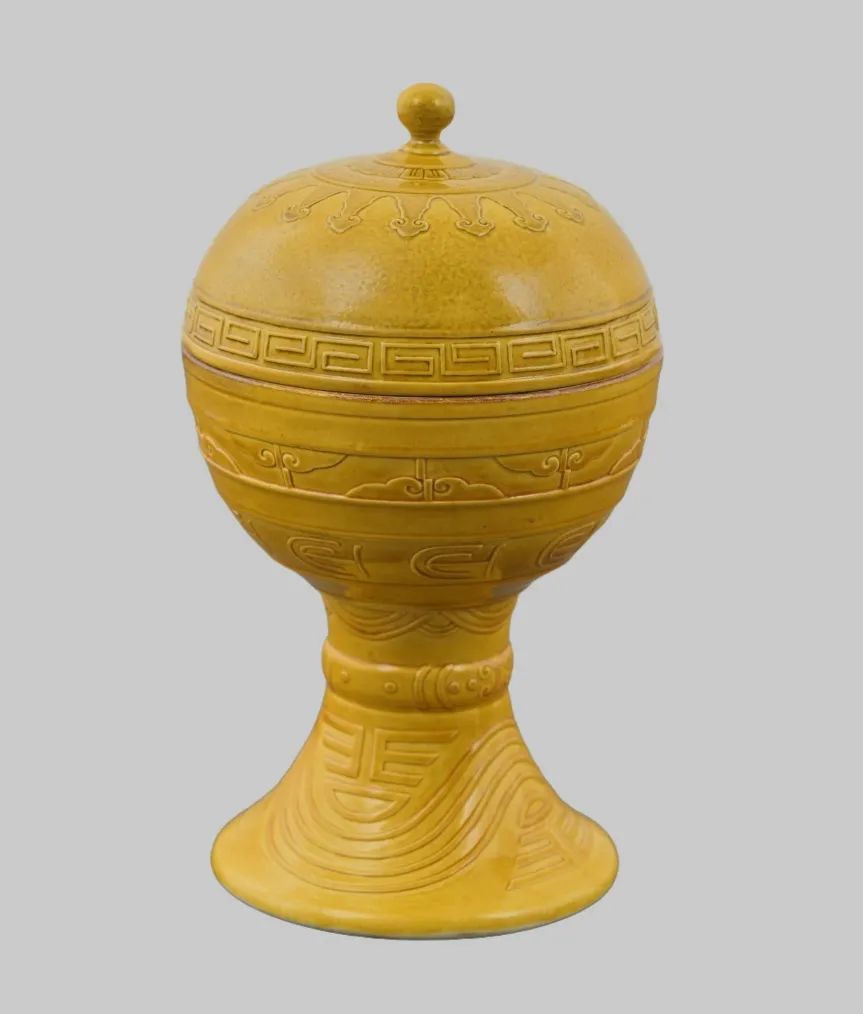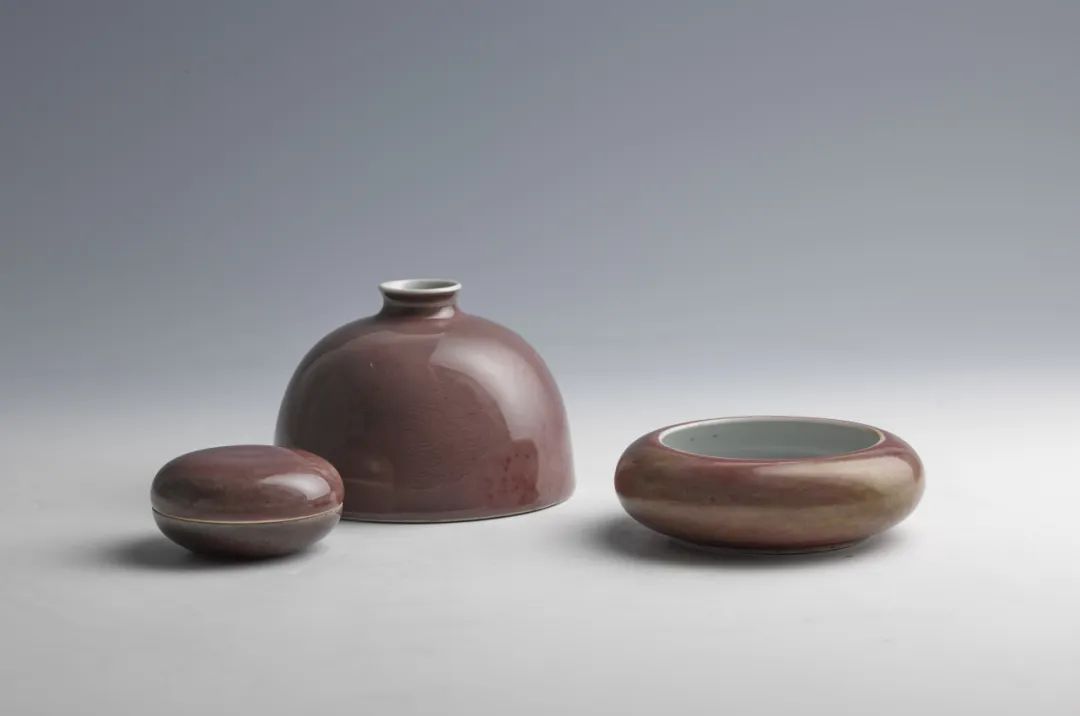Graze in Glaze: A paragon of monochromatic glaze porcelain Time:2025-03-26
From March 28 to May 18, the Fengxian Museum in Shanghai will unveil a highly anticipated exhibition,Graze in Glaze: Qing Dynasty Monochromatic Glaze Porcelain Exhibition, featuring 118 pieces of monochromatic glaze porcelain from the early Qing Dynasty (1644-1911) to the Guangxu period, while also showcasing some of the finest examples of Chinese porcelain artistry in history.

A kiln-transmutation glaze meiping vase (Qing Qianlong).
Monochromatic glaze, also known as single-color glaze, is revered for its natural, unembellished beauty. Using various metallic oxides in kilns with varying temperatures and flame characteristics, these pieces feature rich and vibrant colors.
After the Shang Dynasty (c. 16th century-11th century BC), China's monochromatic glaze porcelain started to evolve, reaching its peak during the Qing Dynasty. This period is considered a golden age of porcelain, particularly during the Kangxi, Yongzheng, and Qianlong reigns, when the imperial kilns at Jingdezhen reached unprecedented heights of craftsmanship.

A red kiln-transmutation glaze basin stand (Qing Yongzheng).
The exhibition includes a stunning array of red, blue, yellow and white Song Dynasty (960-1279) glazes, as well as imitations. Among the standout works is a piece of red glazed porcelain, notable for its bold and striking hues. Whether created with copper-based high-temperature copper-red glaze or iron-based low-temperature red glaze, these pieces shine with various shades of red, ranging from deep crimson to softer coral red.
Yellow glaze porcelain, a symbol of imperial grandeur, was a highly prized object in the Ming and Qing courts, often associated with nobility and prosperity.

A yellow glaze stem bowl (Qing Guangxu)
Green glaze, with its subtle jade-like finish, is also a traditional favorite. Blue glaze pieces, created using cobalt, were first developed in Jingdezhen during the Yuan Dynasty (1271-1368) and became more refined in the Qing period, evolving into vibrant hues of sky blue.
The exhibition also highlights kiln-transmutation glaze, a unique form of glaze that transforms in the kiln, resulting in one-of-a-kind colors. These pieces, reminiscent of rare sunsets and twilight skies, showcase the magic of porcelain.

Three sacrificial red porcelain pieces: Qing Kangxi sacrificial red glaze water container (right); Qing Kangxi sacrificial red glaze seal paste box (left), and Qing Kangxi sacrificial red glaze incised dragon pattern water container (center).